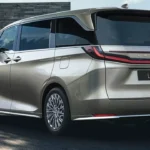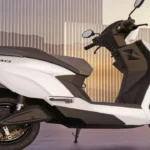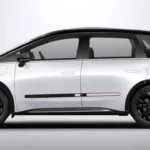The Indian electric 4-wheelers (4W) industry saw a mixed performance during February 2025. With overall sales dipping month-on-moth (MoM). In spite of the odds, some players registered significant growth as a result of new model introductions and changing consumer sentiments. The market continues to play a crucial role in India’s shift towards sustainable mobility. Underpinned by government initiatives and growing consumer awareness.
|
Maker |
Feb’25 |
Jan’25 |
Difference |
%Change (MoM) |
Market Share |
|
Tata Motors |
3,823 |
5,242 |
-1,419 |
-27.07% |
42.70% |
|
MG Motors |
3,269 |
4,467 |
-1,198 |
-26.82% |
36.50% |
|
Hyundai |
738 |
331 |
407 |
122.96% |
8.20% |
|
Mahindra |
479 |
720 |
-241 |
-33.47% |
5.30% |
|
BYD India |
254 |
332 |
-78 |
-23.49% |
2.80% |
|
BMW |
219 |
192 |
27 |
14.06% |
2.40% |
|
Mercedes |
67 |
100 |
-33 |
-33.00% |
0.70% |
|
PCA Automobiles |
59 |
273 |
-214 |
-78.39% |
0.70% |
|
Volvo |
21 |
28 |
-7 |
-25.00% |
0.20% |
|
Kia |
19 |
51 |
-32 |
-62.75% |
0.20% |
|
Others |
14 |
30 |
-16 |
-53.33% |
0.20% |
|
Total |
8962 |
11766 |
-2804 |
-23.80% |
100% |
Key Sales Numbers
- Total Units Sold: 8,962 units, down 23.8% MoM from 11,766 units in January 2025.
Top Performers:
- Tata Motors continued its leadership with 3,823 units sold, representing more than 42% of the market share. That was, however, a 27.07% drop compared to January 2025.
- MG Motor India came in second with 3,269 units, demonstrating good demand for its models such as the ZS EV and Comet.
- Hyundai Motor India experienced strong growth with 738 units sold, representing 122.96% MoM, thanks to the popularity of the recently launched Creta EV.
Growth Drivers and Challenges in Electric 4-Wheelers
Growth Drivers
- New Model Launches: Hyundai’s Creta EV and MG’s Comet drove their respective sales growth.
- Government Policies: Schemes like FAME II and state-level subsidies continue to incentivize EV adoption.
- Enhanced Infrastructure: Public charging points have been increased (10,900 by 2022 end) to minimize range anxiety.
Challenges
- Sales Decline for Leaders: MG and Tata Motors suffered YoY sales declines on account of enhanced competition and supply chain issues.
- Limited Affordable Options: Only nine models are available at a price below ₹25 lakh, which makes affordability an obstacle to mass adoption.
- Consumer Concerns: Range limitations (200–400 km is preferred) and lack of charging infrastructure are still issues of concern.
- Luxury EVs Picking up Pace: Premium segment brands such as BMW (219 units) and Mercedes-Benz (67 units) are witnessing consistent demand.
- SUV Craze: Buyers are opting for electric SUVs such as the Nexon EV and Creta EV.
- Technology Developments: Battery technology innovations are enhancing vehicle range and lowering costs.
Future Prospects for Electric 4-Wheelers
The Indian electric four-wheeler industry is likely to expand sharply in the near future. With a forecasted CAGR of more than 45% (2025–2029), the market size is anticipated to hit $14.79 billion by 2029. Producers must prioritize:
- Augmenting low-cost model availability under ₹25 lakh.
- Improving vehicle range between the desired range of 200–400 km.
- Building stronger charging infrastructure in urban as well as rural regions.
ELCTRIK Speaks
Through February 2025 witnessed a decline in total sales. The Indian market for electric four-wheelers continues to be on the growth path. Companies with their strategy clearly in sync with the consumer’s expectations. Providing affordable products with a suitable range is most likely to rule this changing space.







